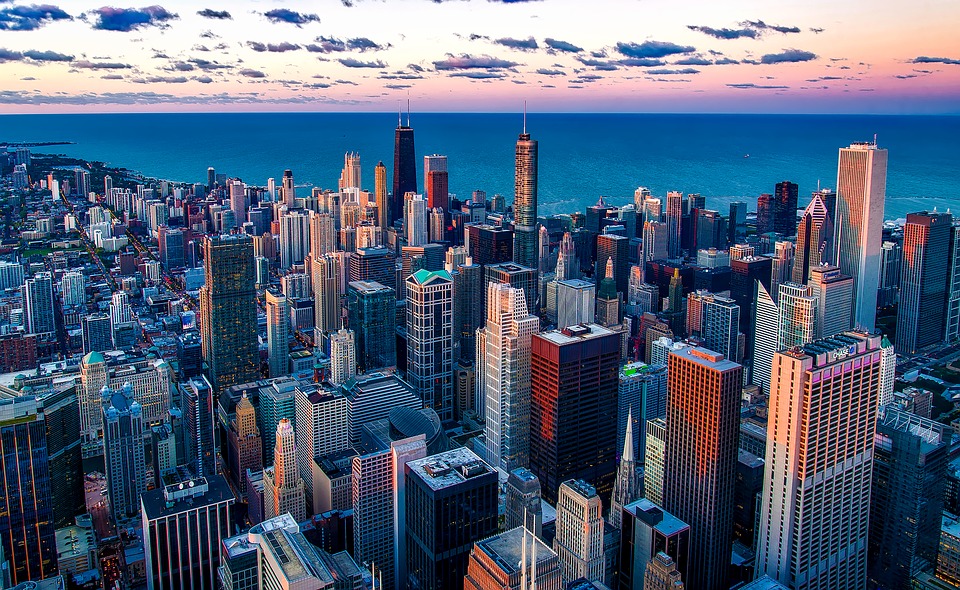Protests in Chicago often center around police misconduct or cuts to education funding. Over the past year, a political battle has unfolded over a project emblematic of both—a proposed $95 million police academy on the city’s West Side. Mayor Rahm Emanuel has claimed that the academy will support the city’s police force and spur growth in the neighborhood. Critics have objected to locating the project in an over-policed neighborhood and have questioned how the city can fund a police academy, but not the dozens of schools it has recently closed. The #NoCopAcademy movement arising from this controversy has become a proxy war for the mayor’s critics who are unsatisfied with his efforts to address police misconduct and his abandonment of struggling schools.
In November 2015, the release of a video showing the gruesome slaying of Laquan McDonald by Chicago police officer Jason Van Dyke ignited activists. Cries of “16 shots and a cover-up” rang out across the city. The killing and subsequent cover-up ultimately led to Van Dyke’s firing and a federal Justice Department investigation, which found a pattern of civil rights violations across the Chicago Police Department (CPD).
In 2013, Mayor Emanuel announced that more than 40 schools across Chicago would close. Spurred by declining enrollment and a perceived need for consolidation, these closures overwhelmingly affected majority Black and Hispanic neighborhoods—the same areas that the Justice Department found to be most heavily burdened by police misconduct. Worse, these newly vacant school buildings have been primarily sold off, rather than converted into community centers, as was promised.
The #NoCopAcademy movement has united organizations across the city in opposition. Yet despite this resistance and objections from prominent critics such as Chicago Police Board President Lori Lightfoot, who called the plan “ill-conceived,” the Chicago City Council approved the purchase of the land and set the project in motion. But activists aren’t giving up. In early April, protesters took to City Hall to stage a sit-in, teach-in, and “die-in.” The scene was grim, with bodies strewn across the lobby of City Hall, finding their places between mock gravestones bearing the names of victims of police brutality in Chicago.
In response, the mayor’s office released a statement saying, “Investments in our youth and community development are a down payment for the future of Chicago and strong, successful youth and communities will make a safer Chicago for everyone.” The Mayor’s office added that the police academy isn’t an either-or proposition, claiming that the academy is essential to implementing the Justice Department’s recommendations to improve policing and to revitalize West Garfield Park. But questions remain as to whether Emanuel’s administration can secure necessary community investments and ensure the police academy achieves its stated purpose.
Furthermore, it’s doubtful that building the proposed academy would improve the Chicago Police Department. In its 164-page report, the Justice Department reserves only a small section to address CPD training. The bulk of the training section recommends changes to how officers are trained and at what frequency. It calls for a greater focus on use-of-force training, and the report as a whole spends far more time on issues of oversight, accountability, and advocating for community-focused, trust-building policing. Spending money on these priorities, rather than a new academy, would go further to improve the police department.
The mayor’s Police Accountability Task Force (PATF), created in the wake of the Justice Department report, has focused on accountability, greater transparency, and a restructured training curriculum in its findings. It hasn’t prioritized addressing the police department’s training facilities. And yet the plan lives on. The mayor’s police academy could support training reforms, but the plan has made no mention of how training might differ in this new facility.
It is also unclear how the academy will be a community catalyst in West Garfield Park. The project will supposedly bring only 100 jobs—most of which are temporary—to the area. Moreover, since the neighborhood is predominantly Black, critics have argued that the last thing the neighborhood needs is a heavier police presence. West Garfield Park bore witness to one of the country’s most destructive race riots following the assassination of Martin Luther King Jr, which contributed to the segregation that still plagues the city. As the 50th anniversary of these riots approaches, Mayor Emanuel has again shown his resolve to appease the police rather than support Chicago’s marginalized communities.
In the wake of the Laquan McDonald scandal, Chicago saw a plummeting rate of police stops despite a spike in gun violence. Many saw this as retaliation on the part of a police force being criticized left and right. If the new academy is Emanuel’s concession for the CPD, it’s a costly one that neglects more pressing recommendations from the Justice Department. One of those recommendations was to increase communication and listen to the city’s afflicted communities. Mayor Emanuel should do just that by refusing to make any investment that increases policing without supporting marginalized communities.
